GOOD ROADS
The Award-Winning Magazine of the Arkansas Good Roads Foundation
Memorial Proposed To Honor ARDOT Employees Who Died While Working




The Award-Winning Magazine of the Arkansas Good Roads Foundation
Memorial Proposed To Honor ARDOT Employees Who Died While Working



It’s not just about getting from Point A to Point B. It’s about having the freedom to get out there, live your life, and make memories happen.
At Ergon, we’re proud to deliver the right paving, preservation, and maintenance and solutions designed to keep your road networks safe and strong. Because you have places to go and people to see. Don’t let inferior road conditions get in the way of life’s adventures.




If there ever was a time to think about why infrastructure development matters, it’s right now in Arkansas. An infusion of $3.8 billion in federal funding means there is a great deal of road and bridge work being done at the local and state levels. I was idly thinking of that recently when navigating traffic to get from downtown Little Rock to downtown Hot Springs in the middle of a Wednesday evening rush hour.
Traffic was heavy through Benton on Interstate 30 in Saline County, but it was moving, and the sections of the road that have been freshly repaved make the ride smoother than it used to be. But progress on this stretch of roadway has not come without problems. The road contractor awarded this job in December of 2018 missed multiple work completion deadlines, and as would be expected, local leaders and commuters are frustrated. The work was originally scheduled to be completed in November of 2022 and then that deadline slipped to March of 2023.
This is a significant stretch of highway that handles more than 85,000 vehicles a day. For thousands of people who work in Little Rock but live in Benton, Bryant, or Hot Springs, this stretch is the heart of the twice daily commute. The road improvement project here covers fiveand-a-half-miles, creating new lanes and improved roads. But the long-term construction problems have not just resulted in traffic delays and frustrated drivers; dozens of vehicles have ended up with heavily damaged tires after slamming into potholes or big road construction steel plates.
You might buy into the stereotype that elected officials don’t listen when something doesn’t go as expected. But that’s not true in this case. The Arkansas Highway Commission announced at its March meeting that legal discussions were underway to put the contractor doing
the Saline County job into default. This action by the commission has never been taken on a job this size in Arkansas history.
As commission members and ARDOT staff discussed taking the unprecedented step on a job this size, the meeting room was quiet. People were paying close attention as Commission Chair Alec Farmer outlined the reasoning behind the commission stepping in and saying the issue needed to be addressed. There was no denial at the meeting of the millions of hours drivers had spent sitting in traffic here since 2019. It was a moment in time that showed what government is supposed to be, and what appointed leaders from across the state should be willing to do. With the default conversation, the five commissioners were simply saying enough is enough. While this job has made headlines due to problems, the vast majority of ARDOT funded work in Arkansas gets reviewed, put out for bid, and completed in a routine fashion. New federal infrastructure money coming to the state, and an extension of a state sales tax to fund better roads, are creating safer roads at the local, state, and federal levels.
Last, year ARDOT managed $1.4 billion in bids for road jobs. In 2024, the expectation is the $1.4 billion will be spent on 195 projects. The jobs will not always go perfectly, and traffic delays around congested work sites will never be completely eliminated. But with the unprecedented default discussion, ARDOT leadership and the highway commission are sending a clear message that work delays like this will not be tolerated.
Please drive safely…and put that cell phone down when you are behind the wheel.
Joe Quinn, Executive Director Arkansas Good Roads FoundationRobert Moery President
Lance Lamberth Vice President
D.B. Hill, III Secretary/Treasurer
Harold Beaver
Graycen Bigger
JoAnne Bush
Bob Crafton
Alec Farmer
Curt Green
Mark Hayes
Shannon Newton
Chris Villines
Jim Wooten
The Arkansas Good Roads/Transportation Council was established in 1975 as a 501(c)(3) non-profit, tax-exempt and tax-deductible organization. In 2015, the council was re-established as a foundation in order to be a more visible and credible voice on behalf of the mission of the Arkansas Highway Commission and the Arkansas Department of Transportation. The purpose of the foundation is to promote adequate funding and financing for the planning, development, construction, and maintenance of a safe and efficient highway, street, road, and bridge system, including transportation enhancements. The work increases statewide economic growth, private sector job creation and retention, and improves the quality of life in all Arkansas counties, municipalities, and communities.
Joe Quinn, Executive Director goodroadsfoundation@gmail.com
Kathryn Tennison, Editor kathryn@bestmanagement.net
Celia Blasier, Designer graphics@bestmanagement.net



















The Arkansas Department of Transportation (ARDOT) has released new guidance for motorists who encounter potholes while traveling on Arkansas’ interstates and highways.
If you are traveling and you hit a pothole, the two main questions to ask are:
1) Was there damage to the car?
2) Were you in a construction zone?

If a motorist received damage to their vehicle and they were in a construction zone, they should contact the contractor for the construction project and file a claim. To find the contractor’s name, simply look up the project on IDriveArkansas.com under the “Work Zones” layer, or call ARDOT at 501-569-2000 for assistance.
If a motorist received damage to their vehicle and they were not in a construction zone, they should contact the Arkansas Claims Commission at 501-682-1619 to file a claim.
If it is not known whether they were in a construction zone, or there are additional questions, they can contact ARDOT at 501-569-2000 for assistance.
In any instance, ARDOT encourages all motorists to report potholes so Department crews are alerted to repair them. You can report a pothole through IDriveArkansas.com.
ARDOT has created a flow
chart explaining what to do if you hit a pothole. The graphic is included below.
Spring is pothole season and it is usually brought on by a harsh winter. Here’s why:
1. Potholes form when water seeps through the pavement.
2. In cold weather, that water freezes and expands, pushing the pavement upward.
3. When the temperature gets above freezing, that frozen water thaws and creates an air pocket in the pavement.
4. When vehicles drive over the air pocket, it collapses, and potholes form.

“On average, we use approximately 15,000 cubic yards of asphalt each year to fill potholes,” Deric Wyatt, State Maintenance Engineer, shared. “We classify our pothole repairs as either temporary or permanent and it is around a 50/50 split between the two. The permanent repairs are typically made using hot mix asphalt during times with better weather conditions and the temporary patching is done using high performance cold mix.”
With the updated pothole policy in place, ARDOT crews will now be able to know what areas to address and be able to get them repaired sooner.
On April 8 of this year, a total solar eclipse will cross north America passing over Mexico, the United States and Canada.
The eclipse’s path will cross the eastern half of the United States entering in Texas, and traveling across Oklahoma, Arkansas, Missouri and states to the east.
During the eclipse, the state will be in what is called the “Path of Totality,” an angle from the earth where the moon appears to entirely block the sun. Darkness similar to that seen at dawn or dusk will be experienced for approximately three minutes in the early afternoon.
The last total solar eclipse passed over the United States in 2017. It was a massive event with millions of travelers flocking to the path of totality. What does that mean for Arkansas in 2024? We can expect visitors coming to the Natural State from across the country and possibly beyond to witness the event.
With such an influx, ARDOT is planning ahead to ensure that highway congestion is kept to a minimum.
“One of the first steps we took in preparing for the eclipse was to look at the 2017 eclipse,” ARDOT’s Assistant Chief of Maintenance Steve Frisbee shared. “We have the benefit of learning from that event. We talked to Departments of Transportation across the
country and learned there is a heavy flow of traffic leading into the best viewing states, but nothing outrageous.
The problem comes when everyone wants to leave for home at the same time after the eclipse. It was the six to 12 hours following the event that caused the unexpected headaches.”
Learning what took place in those states in 2017 is how ARDOT began preparations for 2024.
ARDOT began eclipse planning this past year by preparing a Traffic Management Plan.
“We put a team together and also hired a couple of consultants to assist us with this effort,” Frisbee explained. “We are working with a few engineering firms to create some travel modeling.”
The first step is to determine where traffic will be coming into Arkansas from, and their destination once they get here.
“We will study possible traffic patterns and the information we obtain will go into a computer program that will create a travel demand model.”
This travel information helps ARDOT strategize where our staff needs to be positioned the day of the event. Expected bottlenecks can be determined and


Brent Burwell
Oklahoma/Arkansas ACPA
bburwell@pavement.com
405-767-5100


travel demand reduction strategies and other mitigation efforts can be put into place.
“This will be a multi-agency effort,” Frisbee added. “We will work with Arkansas Highway Police, Arkansas State Police, the Department of Emergency Management and the Department of Health to ensure emergency services are in place and hospitals have ramped up their emergency rooms and capacities.”
Bringing an expected half million visitors into the area of totality requires that ARDOT coordinate strategically to position officers, maintenance personnel, and even staff from our Resident Engineer offices.
“We call it pre-positioning and it enables us to more quickly respond to incidents,” Frisbee added.
“Prepositioning allows us to check on stranded motorists, assist in getting them turned around or finding alternate routes and then clearing the roadway to get traffic moving again.”
Another key component of the Department’s game plan will be getting word to the public. ARDOT’s
Communications Division has been discussing the eclipse and getting information to travelers for over two years.
At the 100-day mark, ARDOT will ramp up awareness of the eclipse through social media, explainer videos and fun facts. The more informed people are of what’s coming and potential problems we may encounter, the smoother it may go.
“We want people to visit Arkansas and enjoy this historical event,” Dave Parker, Division Head of Communications, stated. “We also want people to be able to get around safely and have a good time. However, with millions of visitors predicted to come here, our traffic system will be put to the test.”
After the solar eclipse on April 8, the next total solar eclipse visible from the United States will be in 2044. The path of totality for that eclipse will begin in Greenland, sweep through Canada, and end as the sun sets in Montana, North Dakota and South Dakota. For Arkansas, the 2024 eclipse will be our time to shine. Oops, no pun intended.
(Reprinted with permission from ARDOT)
It’s a Friday afternoon, and the tenth floor at the Arkansas Department of Transportation building is quiet. Director Lorie Tudor and I sit in her office and talk about the memorial being planned for ARDOT workers and Arkansas Highway Police Officers who have died while working. Some states already have elaborate memorials built. Arkansas only has a very modest display involving orange highway cones in an office hallway. Each cone represents an ARDOT worker who has died while working.
Tudor says, “Five years ago, I started thinking
about a permanent memorial. We have always wanted to do something to adequately honor our employees who have lost their lives in the line of duty.”
There is no doubt that working on roads with traffic passing only a few feet away is one of the most dangerous jobs in America. The job is difficult on a perfect April day with the sun shining, but the work is even more dangerous at 2:00 a.m. on a cold December night with freezing rain falling. The current fundraising and planning of an Arkansas monument are consistent with department efforts to increase

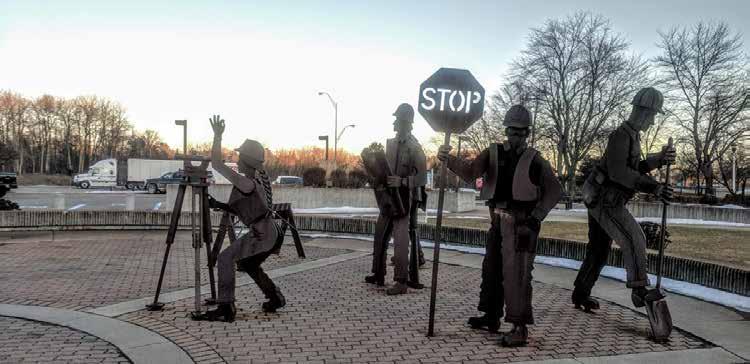
public awareness of road worker danger issues. For the past two years, ARDOT has managed a media campaign reminding drivers to slow down in work zones. Police officers monitoring work zones now have more latitude to use technology to address the problem thanks to the legislation that recently passed to allow speed enforcement cameras in Interstate workzones. The goal isn’t to write more

tickets; the goal is to save lives and prevent injuries.
Arkansas Good Roads has aggressively supported ARDOT efforts to address this very real safety issue. Good Roads Members Associated General Contractors (AGC) and the Arkansas Asphalt Pavement Association (AAPA) didn’t hesitate to pledge $10,000 each to build the monument as well as the walkway and landscaping that will go with it. The monument will feature the name of every fallen department worker and Arkansas Highway Police Officer.
Robert Moery, President of the Good Roads Executive Board, says, “Our members have made it very clear that recognizing the people who have lost their life while working on Arkansas roads needs to be a priority. Other states have beautiful monuments where families can come and mourn their deceased friend or family member. It’s past time that Arkansas

“Other states have beautiful monuments where families can come and mourn their deceased friend or family member. It’s past time that Arkansas offered grieving families the same type of place.”
—Robert Moery, President of the Good Roads Executive Board
offered grieving families the same type of place.”
This issue is unlike any other Lorie Tudor deals with. Tudor understands the orange cones in an office hallway that Arkansas has used to previously mark deaths are not enough. Tudor thinks drivers and driving have changed in recent years, saying, “It is a common perception that the roads have become more
dangerous since COVID. Drivers are more distracted and driving aggressively. The lack of courtesy is dangerous and more noticeable now.”
The most recent death of an ARDOT worker was in May of 2023. Timothy Harris, a 25-year-old young man was struck by a passing car while trying to pick up a ladder that had fallen from a vehicle and been left on the road. Tudor says, “Just like the other sixty employees that we have lost since 1970, Timothy put himself in harm’s way to make the road safe for motorists.”
ARDOT has been working to find ways to make workzones and maintenance operations safer. Recent changes include adding green lights to vehicles and purchasing debris removal equipment. Tudor stated, “We want everyone to go home safe every night.”
Other states have made unique decisions about the placement and design of road workers’ monuments. Minnesota has an indoor memorial with a nearby digital display that tells stories about those who have died. Michigan’s monument is a series of statues with
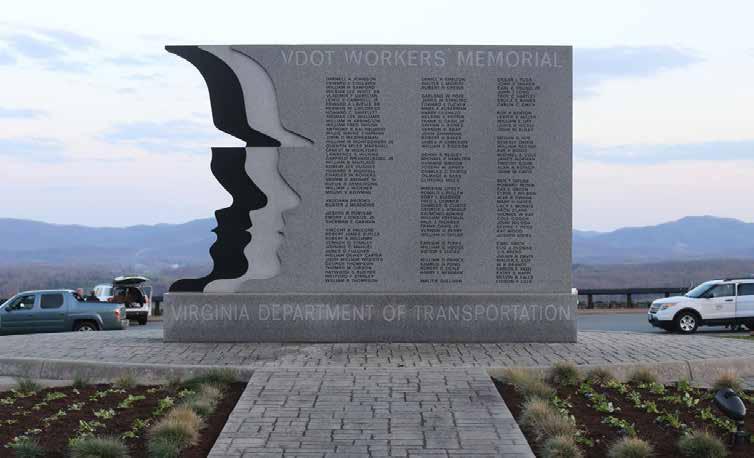
men and women engaged in jobs typically seen on any road work zone in America. The Virginia memorial is a beautifully carved piece of granite overlooking a stunning mountain vista. It’s clear that a great deal of thought has gone into both the design and location of each monument in these states.
“We need to make sure we honor them in a way that is worthy of what they sacrificed.”
Lorie Tudor ARDOT Director
When something goes wrong at ARDOT, Lorie Tudor doesn’t hesitate to take responsibility, and when the department employees do quality work, she is quick to give credit to her staff. Her leadership has changed the ARDOT culture. Relationships with contractors and engineering firms have improved, and Tudor is always willing to listen to problems brought to the department.
But the memorial is different than a budget debate, a change in the bidding process, or a change in asphalt mixtures used by contractors. The memorial is both personal and a reminder of the steep cost that can come with doing this work. As we wind down our Friday afternoon session, Tudor simply says, “We need to make sure we honor them in a way that is worthy of what they sacrificed.”

If you would like to make a donation to the fund set up to pay for the memorial, please scan the QR code at the left. Good Roads is helping manage the donations for this project. ARDOT employees will not be working on the project on state time, so Good Roads is helping manage the project coordination. Please scan the QR code in this article to get more information or to donate. Your support is much appreciated.
Moery says, “From the time we started discussing how to fund this project, our members made it clear they did not care about who gets credit for funding this work. This is not about anyone except ARDOT employees who have died while working, and it’s about their family and friends who want to think about
the lives they lived and why they are missed. We are deeply appreciative to anyone who can help make this project a reality.”
ARDOT hopes to break ground on the memorial by the end of 2024. Currently, ARDOT employees from around the state have submitted design ideas and are planning local fundraisers to raise the money to build something the employees can be proud of. Tudor says, “The memorial needs to emphasize how thankful we are for ARDOT workers and that we acknowledge that their jobs are dangerous. Our men and women keep the roads safe for all of Arkansas’ road users. Some have lost their lives doing so. They deserve to be honored and remembered.”
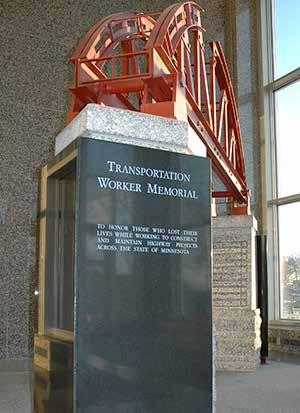









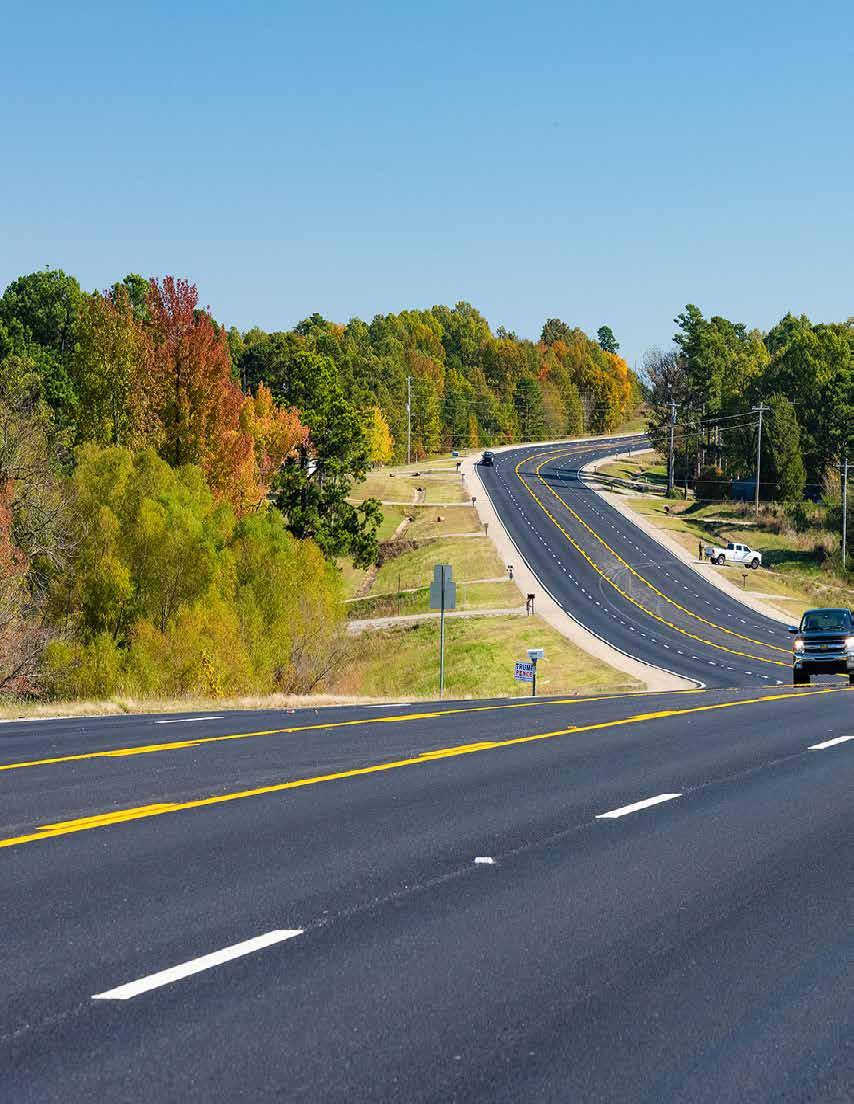
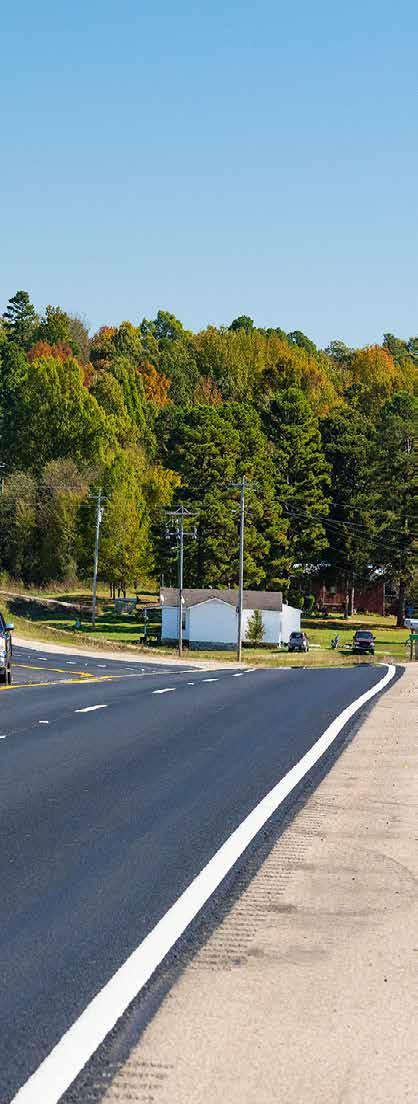
In September, Arkansas Good Roads Foundation members, ARDOT staff, and local and state officials will meet in Mountain Home to in part discuss the future of U.S. Highway 412. The vital transportation corridor in north Arkansas stretches almost 300 miles from the Oklahoma border in the West to the Bootheel of Missouri in the East. It was only designated a U.S. highway 42 years ago, and there have been improvements, but mainly to the more populated areas along the road.
However, the road is a catalyst for the economic engine that drives Northwest and Northeast Arkansas. Two of the state’s largest industries, agriculture and tourism, are critical to those areas, but the highway is more than a way of moving products to market. For some, it’s a road to a better job or higher education; for others, it’s about accessing air travel, specialized healthcare, or simply the opportunity to attend a Razorback football game.
Many of the route’s more rural stretches have been without major improvements, such as passing lanes, but that could change as more funding becomes available through sources such as the Renew Arkansas Highways Program.
Pinpointing and identifying needs and more will be on the agenda of the Arkansas Good Roads Foundation’s regional meeting on September 12 at the Arkansas State University Mountain Home campus. In addition to AGRF members, organizers plan to invite ARDOT staff, as well as concerned officials and legislators. Please use the QR code on page 15 to register for the meeting or to get information about sponsorship opportunities.
As a young Arkansas State University student who regularly drove from Harrison to Jonesboro in the late 1970s, it wasn’t an easy or direct route for David Lafferty. It was four hours of traveling a combination of state and rural two-lane highways, including U.S. highways 65, 63, and 62, through some of the state’s most beautiful scenery. There were plenty of twists and curves and the occasional deer crossing the road. In those days, there were ferries at Norfork and Henderson instead of bridges.
At Henderson, Lafferty, who drove a 1974 green AMC Gremlin with blue racing stripes, was required to wait on the ferry. He remembered, “The ferry ride was kind of neat the first time or two you took it. But if you were driving Hwy. 62 on a regular basis, it added 30 minutes or more to your trip. Sometimes longer. “
It was worse if you were pulling up just as the ferry left. Then you had to wait for the one from the other side to get there and unload before you could cross. Also, passenger vehicles weren’t allowed on the same ferry as a loaded tanker truck.

Prior to US Route 412 opening in the early 1980s, the only way to cross Lake Norfolk was by a car ferry that had operated for years. Local elected officials and community leaders had lobbied for years to construct a bridge across the lake.
Lafferty said, “I remember one day waiting for the ferry and thinking there had to be a better way.”
So, he pulled out a state map and decided to try Hwy. 62 to Mountain Home, Hwy. 5 south to Norfolk, Hwy. 177 to Pineville, Hwy. 56 to Ash Flat. The roundabout trip shaved off about 30 minutes of travel time.
In the early 1980s, bridges were built, and the ferries were retired. In 1982, many of the larger and smaller roadways Lafferty once traveled as a student were designated part of U.S. Hwy. 412. By the time Lafferty was assigned to Baxter County as an undercover Arkansas State Police narcotics investigator in the late 1980s, drivers were beginning to see improvements on Hwy. 62, he recalled.
U.S. highways 62, 63, and 65 continued to run concurrently with it and still do, said Arkansas Highway Commission Chairman Alec Farmer, who was appointed to a ten-year term on the commission as the First Congressional District designee in 2015
by then-Governor Asa Hutchinson. His District covers much of the northern portion of the state.In Arkansas, Highway 412 crosses 12 counties through the northern tier of Arkansas, and depending on the direction of travel, it enters the state from Oklahoma at Siloam Springs. The 290-mile route continues to Springdale, Huntsville, and Harrison before hitting the approximate halfway point and the centrally located town of Mountain Home. From there, it winds through less traveled areas, like Salem, Cherokee Village, Imboden, and Black Rock, and finally through Walnut Ridge and Paragould before exiting at the Missouri Bootheel.
Lafferty, who recently retired as Commander of the ASP Criminal Investigation Division with the rank of Major, said on his return to the area that he continues to see roadway upgrades, and his once four-hour trip was reduced to about three hours or less.
Farmer said he is happy that drivers like Lafferty notice the improvements, adding, “For many years, ARDOT had very limited resources to use where most needed, and this area didn’t have the higher traffic counts that other parts of the state had. Still, there were many improvements made; bridges were built, bypasses and passing lanes were added in strategic spots.”
A Multi-State System
U.S. Hwy. 412 in Arkansas is part of a west-to-east federally designated highway starting in New Mexico and running through Oklahoma, Arkansas, and the Missouri Bootheel before deadheading in Tennessee.
In Arkansas, Hwy. 412 intersects with or overlays several major highways, including U.S. Highways 49, 62, 63, 67, 167, 65, 71B, and Interstate 49. Regionally, it’s a critical roadway that accesses several interstates and U.S. highways and several transportation hubs from Tennessee to New Mexico, Farmer said.
Looking at the larger picture, Farmer said, “At our meeting in Mountain Home, we are going to talk about the value of U.S. Hwy. 412 and growth that would benefit all of us.” Ultimately, the goal is to make it a four-lane highway, but that’s a project with a $4 billion price tag that will take many years to achieve, Farmer said.
Additionally, Farmer said, “ARDOT has worked with the North Arkansas East-West Corridor Association (NAEWCA), made up of local officials across north Arkansas, to identify where to add miles of strategically placed passing lanes to improve safety and traffic flow and reduce driver frustration, which can lead to bad decisions.”
For now, they’re looking at what they can afford to do and where it will have the most significant impact. ARDOT’s biggest challenge is making major improvements on four routes to access this part of the state.
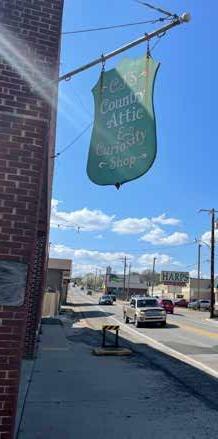
“Depending on where you live in north central Arkansas, widening U.S. 412 to four lanes from northwest Arkansas may be your priority for instance, if you live between Mountain Home and Harrison,” Farmer said. But priorities shift with perspective, he said, “If you live between Mountain Home and Imboden, improving it from the east may be your family priority.”
ARDOT continues to widen U.S. 65 and U.S. 167 northward because both are essential connectors to North and Central Arkansas. Farmer said, “Presently, three primary sections of U.S. 412 have been identified by ARDOT and NAEWCA as priorities for passing lanes. These sections are between Yellville to Bellefonte, Mountain Home to Salem, and Huntsville to Alpena.”
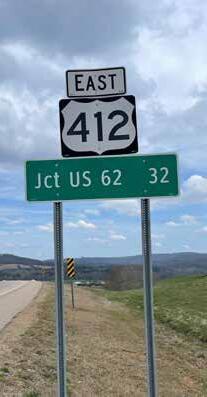
Between 2020 and 2025, ARDOT will complete 41 projects, covering about 180 miles, at a cost of $339.5 million on Hwy. 412. That brings the total number of projects completed from 1990 to 2025 to 239, covering about 1,328 miles, at a cost of about $1,194.4 million. These include pavement preservation and overlays, bridge replacement and repair, safety improvements, and construction.
Additionally, the Commission and ARDOT are currently working to update the Statewide Transportation Improvement Program (STIP) for 2025-28 and anticipate dedicating significant funding for passing lanes on all three priority sections.
About three years ago, Sen. Jim Inhofe, an Oklahoma Republican, along with Arkansas Republicans John Boozman and Tom Cotton, supported federal legislation that would designate Hwy. 412 as an interstate. The highway covers about 190 miles between Interstate 35 in Noble County, Oklahoma, and I-49 in Springdale. Of the total miles, only about 25 miles are in Arkansas.
The “Future Interstate in Oklahoma and Arkansas Act” was approved, and subsequently, Hwy. 412 funded through the Infrastructure Investment and Jobs Act of 2021.
By 2050, Washington and Benton counties are expected to be home to more than one million people. The number is based on past growth rates and projected population patterns, said Tim Conklin, Northwest Arkansas Regional Planning Commission Executive Director. In 1990, the combined population of the counties was 210,908, but by 2000, it had grown to 311,121, an increase of 100,213.
Ten years later, its population grew by 113,283, totaling about 424,404. By 2020, the population passed the half-million mark, with approximately 93,949 people living in Fayetteville, 87,176 in Springdale, 69,908 in Rogers, and 54,164 in Bentonville. Currently, Fayetteville is the state’s second most populous city, and Springdale is fourth, and according to Conklin’s numbers, almost 29 people
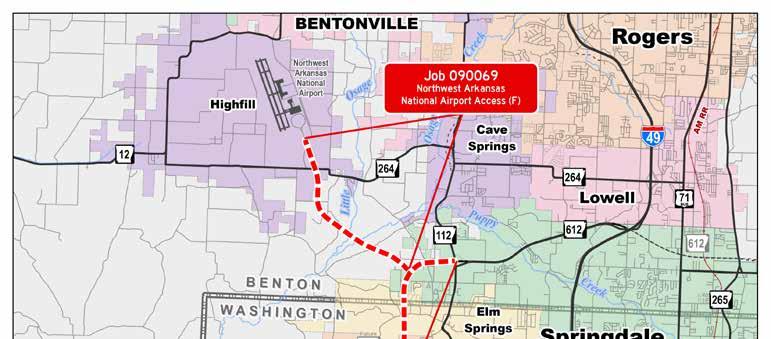
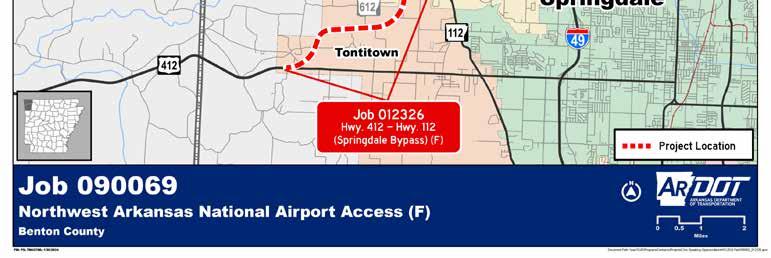
The 25-year-old Northwest Arkansas National Airport (XNA) has experienced a compound annual growth of 5.8 percent in customers in recent years, and from March 2023 until Feb. 2024, one million people flew out of or into the Bentonville facility
move into the area daily, or about 10,580 annually.
The population has grown by 151 percent over the last 34 years. Conklin said, “It’s a significant increase,” stretching and stressing the area’s infrastructure, particularly its roadways.
Through its Renew Arkansas Highways Program, the Arkansas Department of Transportation (ARDOT) hopes to alleviate some of the traffic congestion in that area. On Wednesday, April 17 highway department staff, interested parties, and invited officials will gather in Northwest Arkansas to watch the groundbreaking on the Springdale Bypass Project and the XNA Connector.
Before 2010, the expansion of the number of employees at large corporations such as Tyson, JB Hunt, and Walmart accounted for much of the regional growth. Aaron Burkes, Northwest Arkansas National Airport (XNA) CEO, said, “Walmart was the primary driver, especially with their vendors moving into the area. That drove a significant amount of that growth.”
Burkes is also a member of the Transportation Industry Council for the Federal Reserve Bank of St. Louis, and he is an Arvest Bank of Benton
County board member and served on the Governor’s Cabinet as Arkansas Development Finance Authority President.
“The growth was work-centered, but in 2011, Crystal Bridges Museum of American Art at Bentonville opened, and the economy began to diversify,” Burkes said. Biking trails and more restaurants opened, and the area lakes offered fishing and boating opportunities, all attracting tourists from around the region and beyond.
The completion of Interstate 49 also spurred the region’s growth. The segment between I-30 and U.S. Highway 71 was completed in 2013, the route south to the Louisiana border opened the next year, and the final leg that traveled north to the Missouri border opened in 2021.
Conklin said, “All of these factors meant more commercial and tourist-related growth.”
During this same timeframe, the University of Arkansas at Fayetteville’s student population grew from about 14,000 to almost 32,000. Burkes said, “Many students fell in love with the area and ultimately wanted to stay or move back when they were able. It’s a great place with low crime and friendly people.”
Conklin said the fastgrowing population continues to impact the infrastructure, including municipal systems like sewer and clean water and city, county, and state roads. Burkes added, “It’s hard to keep up, and we’re already behind.”
“There are more good things to come. We’re actively working to develop the eastern phase of the Springdale Bypass from I-49 to Arkansas Highway 265. We hope to start work in 2026.”
Jared Wiley, ARDOT’s Chief Engineer for PreConstruction, said the regional growth rate over the years has made local traffic congestion a priority for ARDOT for some time. The trends also made it clear the Springdale Bypass was essential, as was easier access to the Northwest Arkansas National Airport. These efforts are now part of the Renew Arkansas Highways Program.
—Jared Wiley, ARDOT’s Chief Engineer for Pre-Construction
as height limits for cranes and other equipment. The airport project is slated to wrap up in about three years. Wiley said, “The money for XNA was earmarked years ago, but until now, funding has been a problem.”
The upcoming $181 million Springdale Bypass Project is phase two of four projects. To connect approximately seven miles between I-49 north and Arkansas Highway 612 to U.S. Highway 412 on Springdale’s eastern edge. Emery Sapp & Sons of Springdale is under contract for the Springdale Bypass Project, and plans call for the work to be completed by the summer of 2027.
Wiley said, “There are more good things to come. We’re actively working to develop the eastern phase of the Springdale Bypass from I-49 to Arkansas Highway 265. We hope to start work in 2026.”
The four-mile XNA Connector is slated to begin at approximately the same time and will cost $128 million. In addition to a new asphalt surface, it includes the construction of 11 bridges. Wiley said that both projects will be interstate-grade facilities, and Crossland Construction of Rogers is the contractor for the XNA Connector project.
Because of incoming and outgoing flights, Wiley said the XNA project has unique requirements, such
According to traffic counts, the airport averages about 3,500 vehicles coming and going each day, and Burkes said the 25-year-old airport just “broke its one million annual enplanement number”. That’s how many people took a flight or arrived at the airport from March 2023 through February 2024. As road traffic increases monthly, the number of people driving to or from the airport is also steadily increasing. The unprecedented growth here is a reminder that the complexity of local infrastructure planning in Northwest Arkansas is different than it is in most regions or states.
“Since 1999, we’ve seen rapid growth, with the airport experiencing a compound annual growth of 5.8 percent,” Burkes said. Going forward, the projected numbers are more conservative at about 3.3 percent, but their “catchment area”, or the airport’s surrounding customer draw, is expected to expand.
“At this point, there is no direct access to the airport or even to the area. It’s one of the most congested corridors in the state,” Wiley said. Burkes agreed, adding that Highway 264, an airport access point currently being used, is a narrow-shouldered, two-lane road that frequently floods because it was built in a creek bed. Flooding and congestion often cause customers to miss their flights, Burkes said.
The Springdale Bypass Project and XNA Connector will provide safer and more direct access to the airport and other places throughout the area, and Burkes added this is just one of many steps needed to prepare the region for the needs of supporting one million residents.
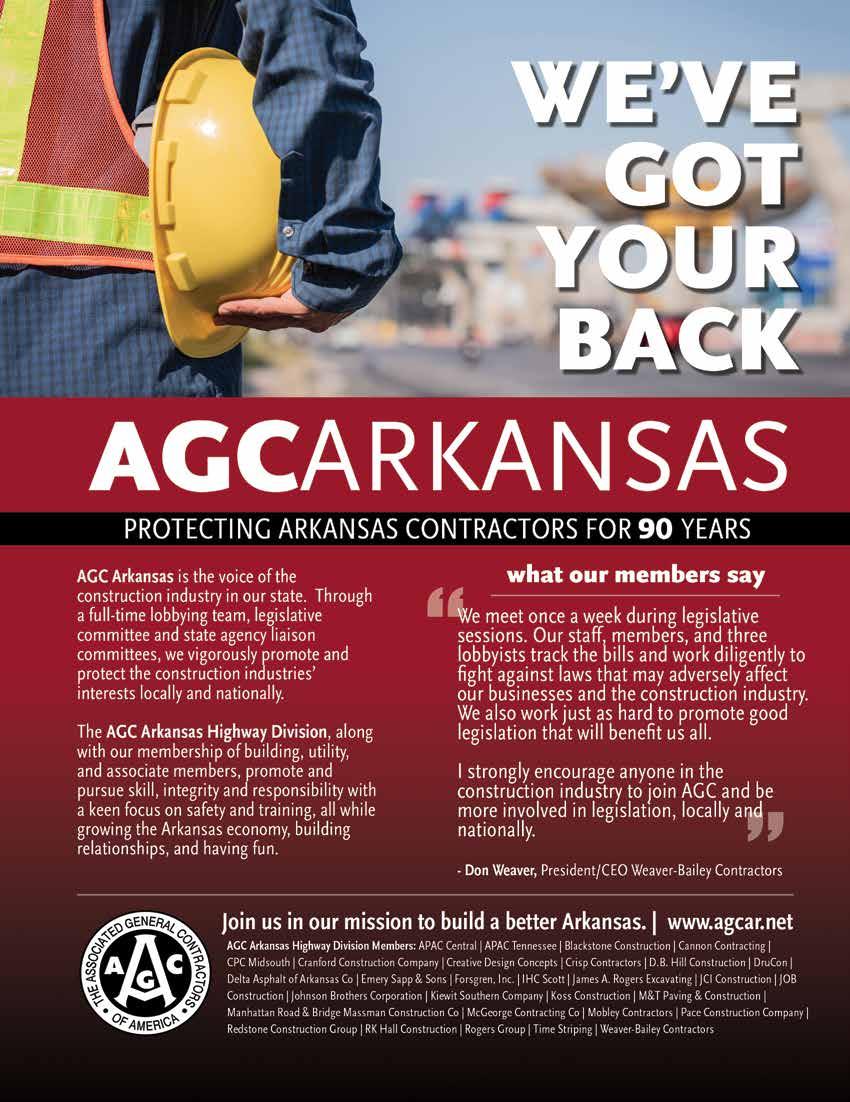
Technology is reworking how modern roads are built—paving the way for safer, more durable roads that are less expensive to maintain over the long haul. According to Arkansas Department of Transportation (ARDOT) officials, intelligent products such as wrong-way detectors and electronically issued tickets are already on the market and in use by their department.
The industry’s rapid and expanding technological developments require more tech-savvy skills from employees, but commercial products such as automated flaggers may help reduce the staffing shortages many road construction companies are experiencing while creating a less risky work environment for employees.
The proper application can result in fewer highwayrelated deaths, and the use of technology on the job will continue to increase. In the future, ARDOT may begin incorporating AI (artificial intelligence) into the mix, allowing one piece of technology to talk with another. For Arkansas’s travelers, technology offers the promise of smoother, safer roads.
Technology is changing the way ARDOT does business, and the trend will continue for years to come, said Deric Wyatt, Arkansas Department of Transportation (ARDOT) State Maintenance Engineer. During a recent conversation with Joseph “Joe” D. Hawkins, P.E., ARDOT Assistant Division Head and

State ITS Engineer, Wyatt said, “We want to make technology work for us.”
Hawkins has been researching and evaluating the effective use of wrong-way detection systems on interstate on- or off-ramps, and its use is about to become a reality on Arkansas’s interstates.
When the wrong-way detection system detects a driver going the wrong way on a ramp, LED lights immediately flash a warning. Hawkins said, “The system is designed to help drivers…It’s designed to get their attention.”
Also, a flood light turns on, allowing cameras to capture the nighttime event in color. The system records the event and sends an alarm to ARDOT’s Traffic Management Center (TMC). The system relies on thermal sensors and infrared cameras that work in all weather conditions, day and night. It also uses static “Wrong Way” signs with LED borders to warn drivers. Hawkins said, “These signs are also internally illuminated at night.”
“For many, it’s a mistake that anyone can make. If we can get a driver to turn around, we’re very proud of it. Potentially, this saved the lives of two drivers and multiple passengers,” he said.
The Locations and Price Tag
ARDOT is currently running two wrong-way detection systems on Interstate 440 at Exit 4 or the U.S. Highway 165 ramps. These are being done in partnership between ARDOT’s System Information & Research and Maintenance divisions. Hawkins said, “It’s proven to work. Within the first month, there were five wrong-way events, with four selfcorrections. Since then, there have been two more, and of the seven events, six were at nighttime.”
Because of its success, ARDOT is purchasing 156 Wrong-Way Detection Systems from TAPCO (Traffic and Parking Control Co., Inc.), headquartered in Brown Deer, WI. TAPCO specializes in roadway safety innovations and is a manufacturer, distributor, and service provider.
The “total cost for the project is $54,698,390.43,” said Hawkins. The purchase includes all the necessary components for the installation of the Wrong-Way Detection Systems, guardrails, dynamic message signs, steel support structures, communications,
traffic cameras, concrete, gravel, and any other related materials needed to complete the job.
In May, ARDOT will begin installing the first set of 10 Wrong-Way Detection Systems on I-430. From there, multiple crews will install systems in increments of 10 in the Little Rock metro area, on I-40 between North Little Rock and Memphis, and spots on interstates 30, 430, 440 and 630, and on U.S Highway 167 south of Jacksonville. InLine LLC, a Little Rockbased company, is the contractor who will install the equipment for ARDOT in Central Arkansas through West Memphis. The project is informally called the 40-East project.
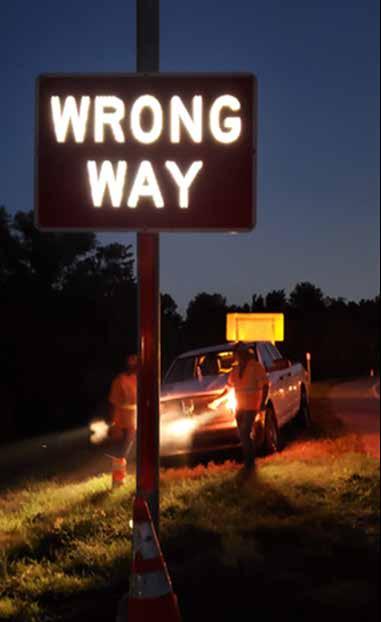
When ARDOT’s wrong-way detection system identifies a vehicle traveling in the opposite direction of oncoming traffic, it immediately takes action. The system notifies ARDOT’s Traffic Management Center, a flood light is turned on, and LED lights flash a warning. Basically, the system relies on thermal sensors and infrared cameras that work in all weather conditions, day and night. (Photo courtesy of ARDOT)
Once completed in August 2025, ARDOT’s TSMO (Transportation System Management & Operations) office will maintain and operate the system.
“Both in Arkansas and nationally, most of these types of incidents happen at night; perhaps the driver doesn’t see the proper lane or is confused. Distracted driving and age is also a factor, but by far, most involve alcohol or drug-impaired drivers,” Hawkins said.
In a wrong-way collision, not just one vehicle but two are usually involved. Because of the combined speeds of the two vehicles, this type of headon collision is often fatal. The Federal Highway
Recent legislation was passed that allows the use of speed enforcement cameras in ARDOT interstate work zones. Over the last few years, the Highway Department has seen an increase in speeding through their work zones, which has resulted in additional accidents. These specialty cameras allow their Highway Police Officers to identify motorists who are speeding through interstate work zones and pull them over safely outside the work zone.
The goal is not to issue more speeding tickets but rather to deter speeding behavior and increase safety through ARDOT’s work zones for both construction workers and motorists—Deric Wyatt, Arkansas Department of Transportation (ARDOT) State Maintenance Engineer.
Although new on the job, the Arkansas Highway Police’s (AHP) Jenoptik Speed Trailer set up at roadway construction sites had issued 2,548 warnings and 504 citations by early January. For more than 60 years, AHP has fallen under the ARDOT umbrella and supports its efforts of maintaining safe work zones for ARDOT and their contractors’ employees. Warning signage notifies drivers that they are approaching a work zone where photo enforcement is being used.
Administration reports that, on average, approximately 260 wrong-way crashes result in about 360 fatalities annually. Although this number represents only about 3 percent of all car crashes in the United States annually, wrong-way vehicle crashes result in about 27 percent of all fatalities.
Arkansas’s numbers reflect the deadly wrong-way national trend that has been on the uptick since about 2018. Between 2009 and 2011, there were 42 deaths and 30 deaths between 2012 and 2014, and between 2015 and 2017, there were 49 deaths and 65 deaths between 2018 and 2020. Since 2009, wrong-way fatalities are up almost 55 percent.
Wyatt said, “This is a technology that can work for us.”
Capt. Louis Hatchett, Arkansas Highway Police (AHP) Commander of Special Services, said about the system, “It’s precision laser technology. It’s an automated, semi-stationary (speed) enforcement device.”
For example, Hatchett said, “When a driver goes over 70 mph through a work zone, it will take a photo that can be downloaded. Once the vehicle leaves a work zone, it’s immediately pulled over, and an officer can issue either a ticket or a warning. He added, “We’ve written more warnings than tickets to allow folks to get used to it. In the future, we will probably issue more tickets than warnings.”
It’s a speed-reduction tool that can be easily moved and used at various locations. For example, it can be used to help reduce driving speeds near schools and other high-risk areas. According to Jenoptik’s website, the system is powerful enough to detect every vehicle within the measurement range, across multiple lanes, and in both directions.
Hatchett said the AHP has one device that costs about $700,000, but eventually, it would like enough units to cover the state’s five districts. It’s another instance of technology working to make Arkansas’s worksite and roadways safer, Wyatt said.
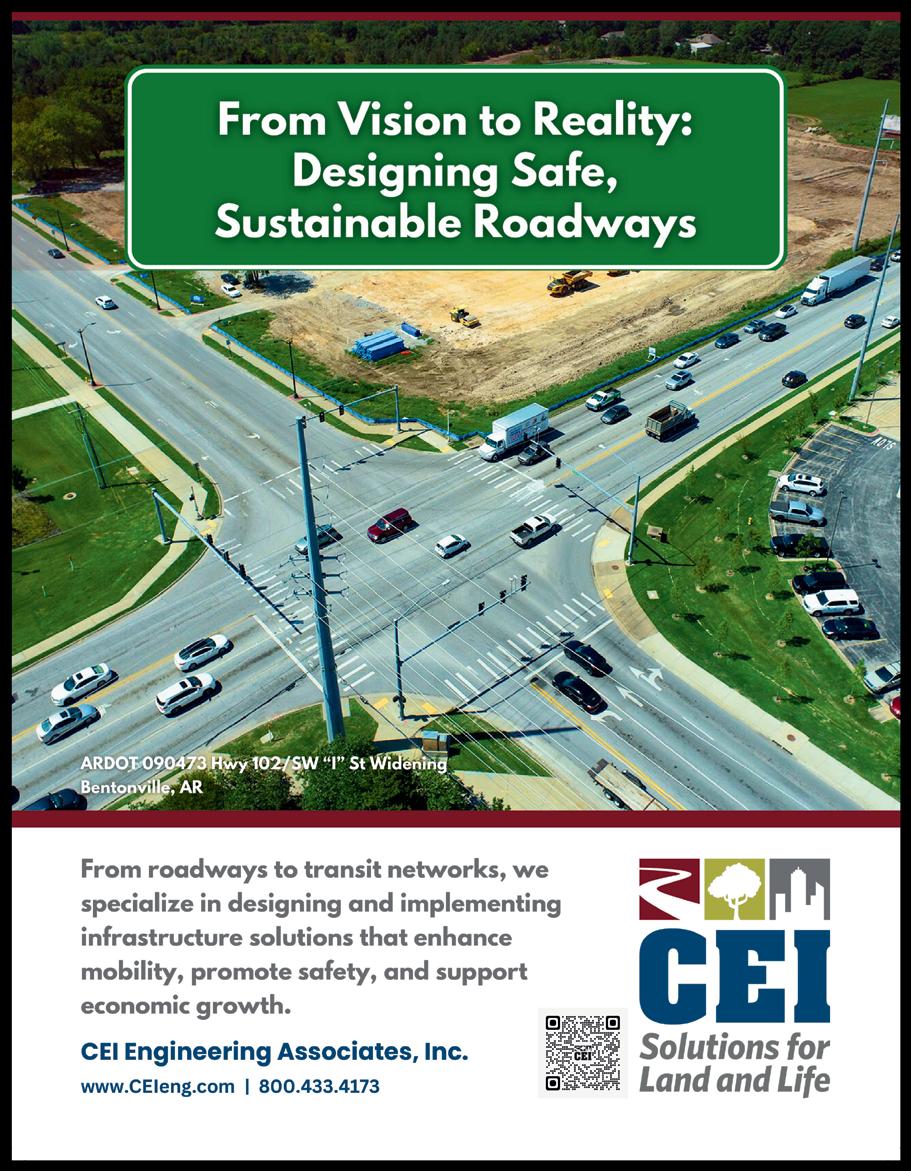

Alex Roofe is being named District Engineer in District Five effective June 29, 2024.
Roofe has a bachelor’s degree in engineering with an emphasis in civil engineering from Arkansas State University.
Roofe began his career with the Department as an Intern before being hired as an Engineer in RE Office #21 in Monticello in January 2013. Roofe promoted several times and obtained his current position of District Maintenance Engineer in April 2019.

Stacy Burge is being named District Engineer in District Nine effective March 23, 2024. Burge has a bachelor’s degree in civil engineering from the University of Arkansas in Fayetteville.
Burge began his career with the Department as an Engineering Student Intern prior to being hired in January 1993 to a full-time position as a Civil Engineer I at RE Office #95. He obtained his current position of District Construction Engineer in December 2020.

Shane Wood is being named District Engineer in District Ten effective April 6, 2024.
Wood has a bachelor’s degree in engineering with an emphasis in civil engineering from Arkansas State University.
Wood began his career with the Department as a temporary employee before being hired as a Civil Engineering Technician in RE Office #04 in March 2003. He was promoted to Advanced Construction Field Engineer in RE Office #06 in July 2014. He advanced to Assistant RE in February 2017. In June 2021, he advanced to his current position of District Maintenance Engineer.

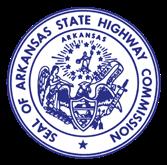

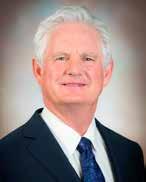

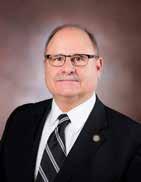
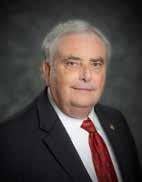
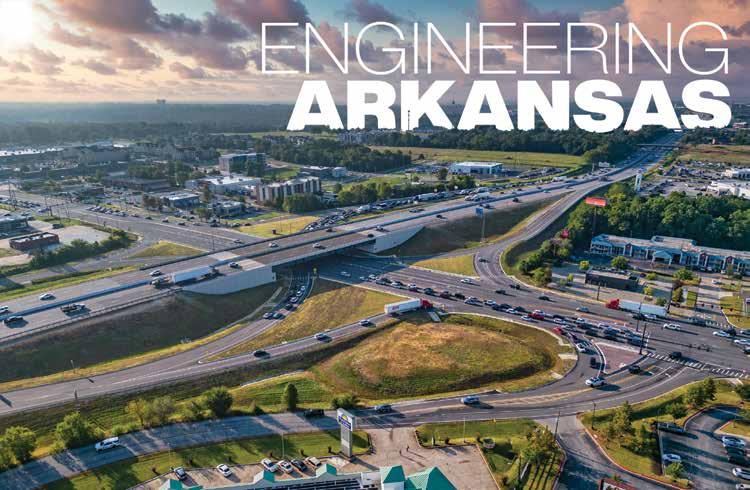

ACEC/A
AGC Arkansas
Alec Farmer
APAC-Central, Inc.
APAC-Tennessee, Inc.
Arkadelphia Alliance
Arkansas Asphalt Pavement Association
Arkansas Concrete
Arkansas Department of Transportation
Arkansas Farm Bureau
Arkansas Municipal League
Arkansas Poultry Federation
Arkansas Society of Professional Engineers
Arkansas State Chamber of Commerce
Arkansas Trucking Association
Ash Grove Cement Company
Association of Arkansas Counties/ County Judges
Associated Builders & Contractors of AR
Atlas Asphalt, Inc. (Jamestown Investments)
Bank of Delight
Blackstone Construction
Bob Crafton
Burns & McDonnell
Cashion Company
Clark Machinery Company
Commercial Bank - Monticello
Contractor’s Specialty Service Company
Cowling Title
CPC Midsouth
Crafton-Tull & Associates
Crisp Contractors
Curt Green & Company, LLC
D.B. Hill Contractors, Inc.
Delta Asphalt
Dermott Industrial Development
Dumas Chamber of Commerce
Eagle Bank and Trust
Emery Sapp & Sons
Fayetteville Chamber of Commerce
First Community Bank of Batesville
FM Structural Plastic Technology
Forsgren, Inc.
Garver LLC
Golden Triangle Economic Development
Harold Beaver
HDR Engineering
Hines Trucking Inc.
HNTB Corporation
Horatio State Bank
Hudson, Cisne & Company
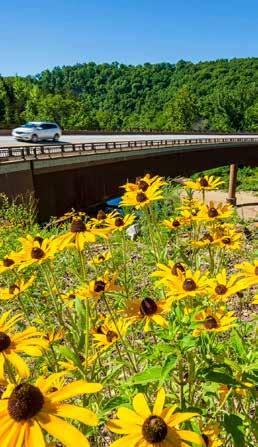
I-49 International Coalition
Jack Buffington
Jeffrey Sand Company
Jensen Construction Company
Jim Wooten
JoAnne Bush
Jonesboro Chamber of Commerce
Keith Gibson
Kiewit Corporation
LaCroix Optical Company
Larco, Inc.
Lawrence County Chamber of Comm.
Lion Oil Company
M & T Paving and Construction Co., Inc.
Marie Holder
Maxwell Hardwood Flooring
McGeorge Contracting Company, Inc.
Michael Baker Int’l
Midwest Lime Company
Millar, Inc.
Mobley General Contractors
Monticello Economic Development
Commission
Natural State Consulting
NE Ark. Regional Intermodal Facilities Authority
NWA Council
Ohlendorf Investment Company
OK AR Chapter American Concrete
Paragould Reg. Chamber of Comm.
Philip Taldo
Pickering Firm, Inc.
Razorback Concrete Company
Riceland Foods, Inc.
Riggs CAT
Robert Moery
Rogers Group, Inc.
Ronnie Duffield Gravel Company
Ryburn Motor Company, Inc.
Scott Equipment
Springdale Chamber of Commerce
SW AR Planning & Development District
Tyson Foods, Inc.
UCA Foundation
University of Arkansas
Upper SW Regional Solid Waste Management District
Walmart
Weaver-Bailey Contractors, Inc.
Western Arkansas Intermodal Authority
Last fall, ARDOT announced that they have launched a new platform called “Ask ARDOT”, which is a streamlined way for citizens to submit questions and comments to ARDOT employees.
ARDOT Director Lorie Tudor said, “ARDOT has always prided itself on its high standard of communication with the public. This new customer service platform furthers that commitment. This software allows us to track stakeholder input and inquiries, and to use that data to better serve the citizens of Arkansas.”
By going to the ARDOT website under the “Contact Us” tab, citizens can then create an account,
which will be used to communicate back and forth with ARDOT. All topics relating to highways and interstates are available, including construction project details, problems with potholes, trucking permits, and job applications.
There are many different categories that the user can select for their inquiries. Communication updates can be viewed by logging back into the account.
The “Ask ARDOT” portal contains additional helpful information, such as Frequently Asked Questions, quick links, and popular topics.
There is a video on the ARDOT website that explains more about how to use “Ask ARDOT”.
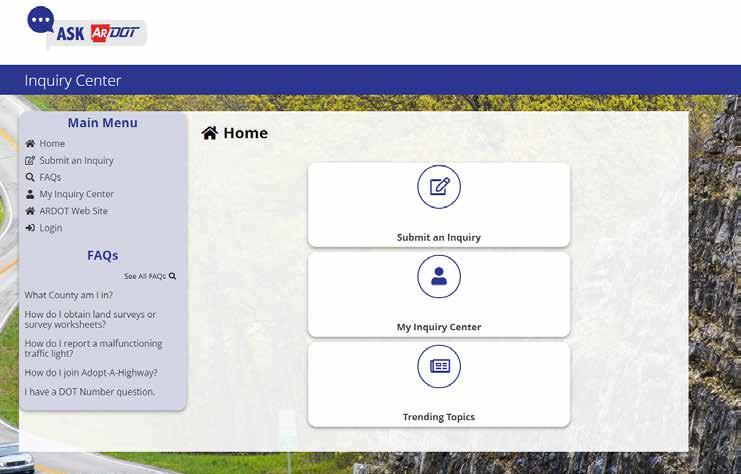

In early March, Representative Rick Crawford (R-Jonesboro), announced that he will run for chairman of the House Transportation and Infrastructure Committee. Currently, Crawford serves as chairman of the subcommittee on Highways and Transit.
During his time in this role, he has worked on legislation to address supply chain deficiencies and trucking policies.
“Over my 13 years serving on the Transportation and Infrastructure Committee, I have developed a close working relationship with both stakeholders in the industry and my colleagues on the committee,” Crawford said. “Through collaborative effort between the two, we’ve developed one of the most efficient and respected committees in Congress, and I hope to build
upon this success as chairman.”
Prior to becoming chairman of Highways and Transit, he was the lead Republican for the subcommittee on Railroads, Pipelines, and Hazardous Materials. During that time, he oversaw the government’s response to the Colonial Pipeline hack and fought for strong “Buy America” provisions in the rail industry.
“Our transportation and infrastructure system impacts every facet of our economy and daily life, from the food you buy at the grocery store, to the clothes on your back, to the airplane flight to grandma’s house for the holidays, to the safe and reliable energy you use to heat your home, and so much more. The work we do on this committee is serious, and it requires a balanced approach from someone willing to work with the other side of the aisle and with hundreds of stakeholder organizations. I plan to lead the committee with strong and effective leadership,” Crawford said.
The Little Rock Convention & Visitors Bureau (LRCVB) recently unveiled a new mobile visitor center and called for the public’s help in naming it. With interactive displays and informational exhibits, this mobile center will be a sort of moving billboard, promoting the city of Little Rock in a new and exciting way.
“We are proud to introduce the mobile visitor center, which will play a vital role in showcasing Little Rock to a broader audience,” said Gina Gemberling, president and CEO of LRCVB. “This mobile unit will allow us to service visitors in our city at various tourism attractions and events, as well as in
feeder cities, which can help us promote our city as a leisure travel destination.”
In addition to traveling and showing people across the state a taste of Little Rock’s many attractions, the mobile center will gather data in other cities to help LRCVB better market Little Rock as a tourist destination. On the other hand, when the mobile center is in Little Rock, it will gather data from visitors, including where they’re visiting from, the length of their visit, and which attractions and locations they visited.
The name for the mobile center will be announced in April.

Good Roads works with our members to tell the story of the need for funding and financing to help all communities develop, build and maintain roads and bridges. This drives the local economy and makes the roads safer for all of us. We have corporate and individual membership rates available.
The award-winning Good Roads magazine reaches more than 1,200 key stakeholders. If you want to put your message in front of an elite audience of state legislators, mayors, county judges, Good Roads members, engineers and the companies that build roads and bridges, this is the best way to do it. This is the only in-state publication that offers you an easy way to reach this very specific audience.
Arkansas Good Roads Foundation
goodroadsfoundation@gmail.com
479-426-5931


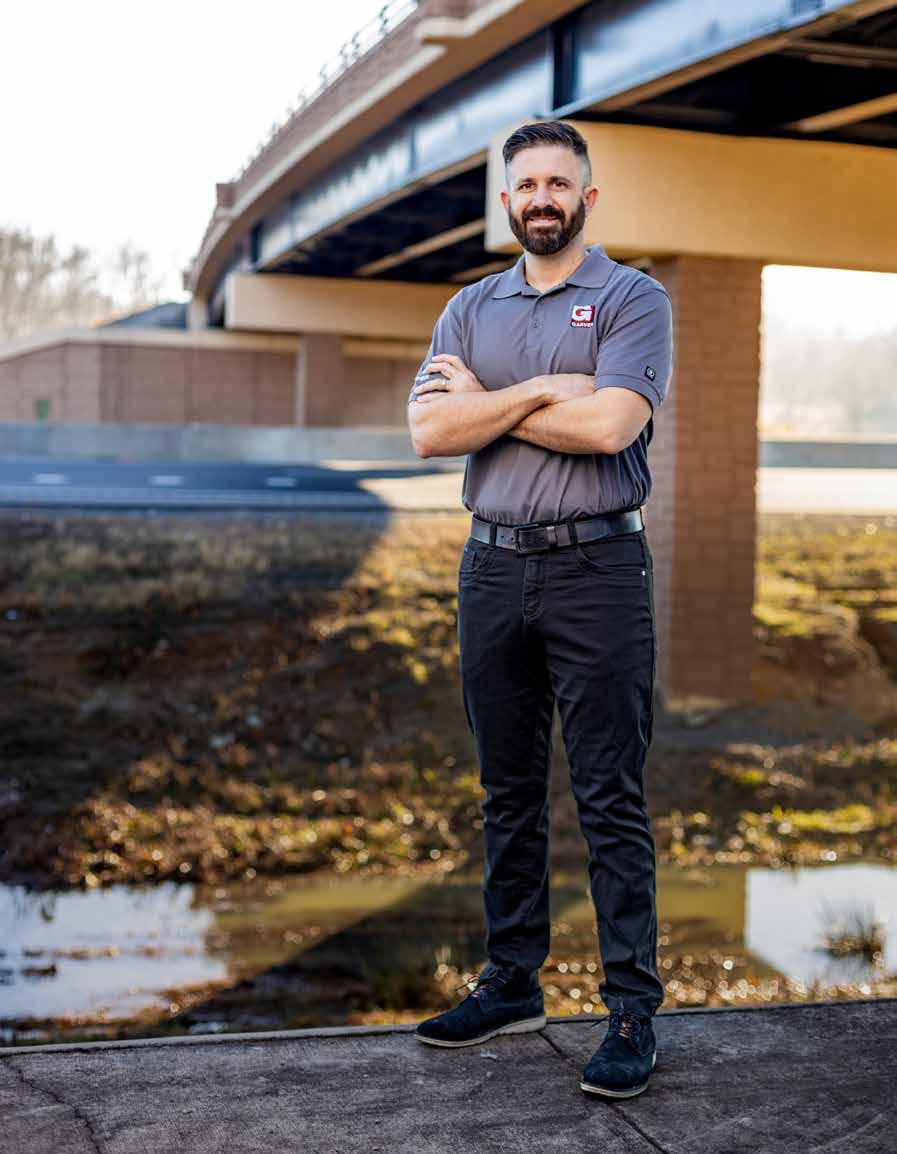
At Garver, our Transportation Team provides long-lasting infrastructure solutions that will benefit communities for generations to come. That includes Dustin Tackett, an Arkansas native leading an Arkansas-based team of engineers dedicated to building a foundation for the state’s future. The road ahead has never looked so good.
Dustin Tackett, PE Transportation Team Leader GarverUSA.com

